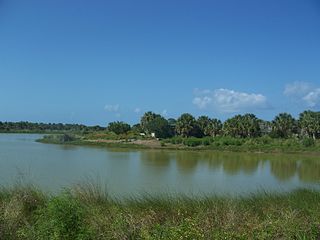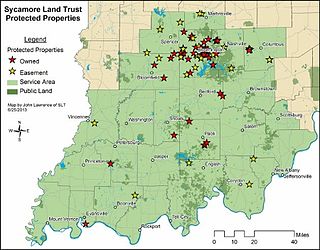Related Research Articles

Southeast Alaska, often abbreviated to southeast or southeastern, and sometimes called the Alaska(n) panhandle, is the southeastern portion of the U.S. state of Alaska, bordered to the east and north by the northern half of the Canadian province of British Columbia. The majority of southeast Alaska is situated in Tlingit Aaní, much of which is part of the Tongass National Forest, the United States' largest national forest. In many places, the international border runs along the crest of the Boundary Ranges of the Coast Mountains. The region is noted for its scenery and mild, rainy climate.

The City and Borough of Juneau, more commonly known simply as Juneau, is the capital city of the U.S. state of Alaska, located in the Gastineau Channel and the Alaskan panhandle. Juneau was named the capital of Alaska in 1906, when the government of what was then the District of Alaska was moved from Sitka as dictated by the U.S. Congress in 1900. On July 1, 1970, the City of Juneau merged with the City of Douglas and the surrounding Greater Juneau Borough to form the current consolidated city-borough, which ranks as the second-largest municipality in the United States by area and is larger than both Rhode Island and Delaware.
Overflow National Wildlife Refuge (NWR) is a 13,973 acre national wildlife refuge in Ashley County, Arkansas. Overflow NWR is one of three refuges forming an administrative complex, which also includes Felsenthal NWR and Pond Creek NWR to the west.

Pelican Island National Wildlife Refuge is a United States National Wildlife Refuge (NWR), and part of the Everglades Headwaters NWR complex, located just off the western coast of North Hutchinson Island in the Indian River Lagoon east of Sebastian, Florida. The refuge consists of a 3-acre (12,000 m2) island that includes an additional 2.5 acres (10,000 m2) of surrounding water and is located off the east coast of Florida of the Indian River Lagoon. Established by an executive order of President Theodore Roosevelt on March 14, 1903, Pelican Island was the first National wildlife refuge in the United States. It was created to protect egrets and other birds from extinction through plume hunting. The oldest government wildlife refuge of any kind in North America is the Lake Merritt Bird Refuge in Oakland, California. Oakland Mayor Samuel Merritt declared it a wildlife refuge for migrating birds in 1869. In 1870, the state of California designated Lake Merritt a state game refuge.

The National Wildlife Federation (NWF) is the United States' largest private, nonprofit conservation education and advocacy organization, with over six million members and supporters, and 51 state and territorial affiliated organizations (including Puerto Rico and the Virgin Islands).

The National Wildlife Refuge System in the United States has a long and distinguished history.

Nora Marks Keixwnéi Dauenhauer was a Tlingit poet, short-story writer, and Tlingit language scholar from Alaska. She won an American Book Award for Russians in Tlingit America: The Battles of Sitka, 1802 And 1804. Nora was Alaska State Writer Laureate from 2012 - 2014.
Sarah Agnes James is a native Neets'aii Gwich'in from Arctic Village, Alaska, USA, but was born in Fort Yukon "because that is where the hospital was. I grew up part of the time in Fort Yukon and Salmon River, but most of the time in Arctic Village, Alaska."James is a board member of the International Indian Treaty Council. She was awarded the Goldman Environmental Prize in 2002, together with Jonathon Solomon and Norma Kassi. They received the prize for their efforts to protect the Arctic National Wildlife Refuge (ANWR) from plans of oil exploration and drilling. Oil and gas exploration would disturb the life cycle of the Porcupine caribou, which has been a foundation for the Gwich'in culture since approximately 18,000 BC.

The Izembek National Wildlife Refuge is the smallest of the National Wildlife Refuges located in the U.S. state of Alaska. It lies on the northwest coastal side of central Aleutians East Borough. Almost all of the refuge was designated as wilderness in 1980 under the Alaska National Interest Lands Conservation Act (Anilca). The refuge is administered from offices in Cold Bay.

The following outline is provided as an overview of and topical guide to the U.S. state of Alaska:

Sycamore Land Trust is a 501(c)(3) non-profit member-supported land trust headquartered in Bloomington in the U.S. state of Indiana.
R. T. "Skip" Wallen is an American artist based in the state of Alaska. He is best known for his stone lithographs of Alaskan wildlife and native peoples and for his monumental bronze sculptures. His original prints, watercolors, and small bronzes are found in museums and private collections around the world. His monumental bronze sculptures are found in major institutions and public spaces in the U.S. and Europe. He was one of only two living artists included in the landmark New York Kennedy Gallery exhibit, Alaskan Masters, in 1976. and has had one-man exhibitions of stone lithographs in Europe. He was recognized with an honorary doctorate in the arts in 2006.
Marie (Nick) Arnaq Meade is a Yup'ik professor in the humanities and also a Yup'ik tradition bearer. Meade's Yup'ik name is Arnaq which means "woman." She also works and travels with the International Council of Thirteen Indigenous Grandmothers. Meade is also part of the Nunamta Yup'ik Dance Group. Meade has been documenting the cultural knowledge of Yup'ik elders, including the values, language and beliefs of the Yup'ik people for over twenty years. She is currently an instructor at the University of Alaska Anchorage.
Edna Ahgeak MacLean a.k.a. Paniattaaq is an Iñupiaq academic administrator, linguist, anthropologist and educator from Alaska, who has specialized in the preservation and revitalization of the Iñupiaq language.

Rosita Kaaháni Worl is an American anthropologist and Alaska Native cultural, business and political leader. She is president of the Sealaska Heritage Institute, a Juneau-based nonprofit organization that preserves and advances the Tlingit, Haida and Tsimshian Native cultures of Southeast Alaska, and has held that position since 1997. She also served on the board of directors of the Sealaska regional Native corporation for 30 years, beginning in 1987, including as board vice president. The corporation, with more than 22,000 shareholders, founded the heritage institute and provides substantial funding.

Olga Katherine Torkelsen Hurley served as the Secretary to Alaska Territorial Governor Ernest Gruening from 1944 until his departure from office in 1953. She was Chief Clerk to the Alaska Constitutional Convention from 1955 to 1956 and the secretary to the State Senate for five terms. In 1984, she was elected to seat 16-A in the Alaska house, serving until January 1987.
Lois Colleen Maddox better known as Connie Boochever was a performer, director and producer of community theater and lifelong patron and advocate for the arts.
Daisy Lee Bitter was an American science educator. She was named to the Alaska Women's Hall of Fame in 2015.

Charles E. Wheeler Wildlife Management Area is a 625-acre (253 ha) brackish tidal marsh, nature preserve and hunting area owned by the state of Connecticut located in Devon (village), Milford, New Haven County, Connecticut.
Mary Jane Patricia Dockeray was an American environmental educator, founder of the Blandford Nature Center and Environmental Education Center in Grand Rapids, Michigan. In 2012, she was admitted to the Michigan Women's Hall of Fame.
References
- 1 2 3 4 5 6 7 8 "Womens Hall of Fame » Class of 2018" . Retrieved 2019-05-04.
- ↑ "King". Southeast Alaska Land Trust. Retrieved 2019-05-04.
- ↑ Fry, Eric (August 2, 1999). "A Refuge From Development". Juneau Empire.
- ↑ Hutchison, Kristan (December 18, 1997). "Group to share conversation info at open house" (PDF). Juneau Empire. Retrieved May 3, 2019.
- ↑ "Audubon Alaska News" (PDF). Audubon Alaska. Spring 2018. Retrieved May 3, 2019.